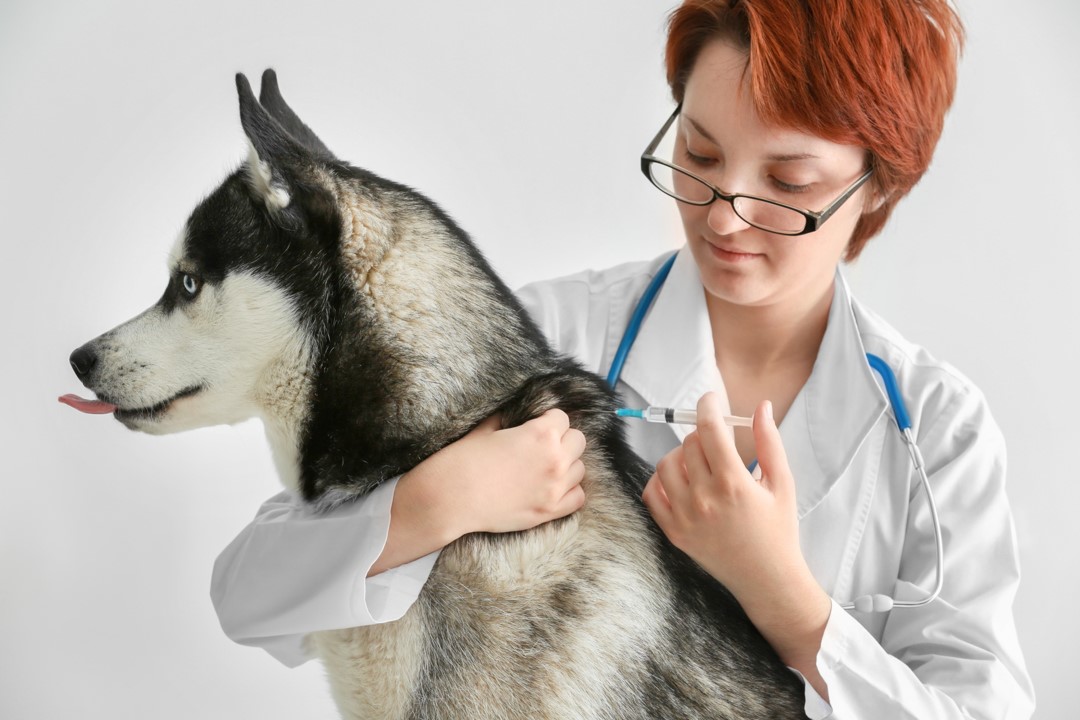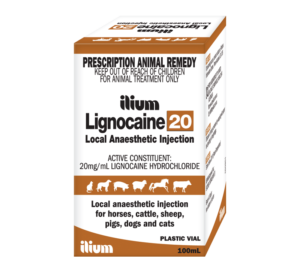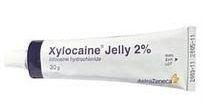
What is lignocaine?
- Lignocaine is available in various names specially Xylocaine (N-(2,6-dimethyl phenyl)-N2,N2-diethylglycinamide)
- It is widely used as an amide local anesthetic agent, as well as Cardiac Dysrhythmic Medication.
- Where injected, it has the ability to numb or sensitize the area or tissue.
- Have many uses in veterinary including Cardiac problems (tachycardia), may be used in Liver problems, can Blocks the nerves.
- Stabilizes excitable membranes and prevents initiation and transmission of nerve impulses.
- Reduces phase four diastolic depolarization, decreases automaticity and causes a decrease or no change in excitability and membrane responsiveness.
- The ratio of effective refractory period to action potential duration is increased.
- Lignocaine raises the ventricular fibrillation threshold.
- Good efficacy in ischemic myocardium.
- Widely used with a small amount of Adrenaline (Epinephrine) to increase effectiveness as well as to increase sensitization time.
- Due to its soothing effect, it is also used as a pain reliever in animals.
- When used locally, the local neurons become numb, and can’t perform their function and hence signaling inhibits.
- It may cause toxicity if the dose rate isn’t settled.

According to the World Health Organization (WHO), it is regarded as the safest, and most efficient drug, with fewer contraindication problems as well as high safety levels even in Pregnancy.

Lignocaine as a local anesthetic
Maximum dose of Lignocaine is as follows:
- Lignocaine without adrenaline 3mg/kg
- Lignocaine with adrenaline 7mg/kg
Its effect begins from 4 minutes to half an hour until 3 hours.
Lignocaine is considered as the least allergic among all anesthetic agents.
Use of lignocaine during rectal palpation

- Lignocaine is noted to be used in rectal palpation of horses only, as horses are very sensitive regarding this matter, and even a small issue can cause bleeding in them that is life-threatening and also cause Tetanus.
- Rectal tears usually occur in broodmares because they undergo the procedure so often, which leads to irritation of the rectal lining.
- Veterinarians while performing Rectal Palpation in Horses keep special preventive measures and use Lignocaine Gels and injectable Lignocaine Medications locally.
- Horses are complex and at times unpredictable animals and due to their temperament and anatomical features, all rectal palpations carry the recognized risk to the horse of a “Rectal Tear”.
- A Rectal Tear involves damage to one or more tissue layers of the rectal wall, up to and including the full thickness of all tissue layers.
- Depending on the extent of the tissue damage, the consequences of a horse suffering a rectal tear can range from minor to serious illness, requiring major surgery, and to death.
- Despite all such precautionary measures Horses come-up with a rectal tear, sometimes known to the veterinarian and sometimes unknown.
- Lignocaine is the major drug used during the Rectal palpation of the horse to avoid such rectal tears that causes heavy bleeding and may be fatal.
Why don’t we use lignocaine in other animals?
Here the question arises, why don’t we use lignocaine in other animals, mainly cattle, buffalo too to totally secure rectal palpation?
After proper practical work done by veterinary students of FVS, BZU, Multan, in regular farms around different areas of Punjab, mainly in Zaidi dairy farms, it is suggested to veterinarians, farmers, and artificial insemination technicians to use lignocaine during rectal palpation. It is suggested to avoid any kind of mishandling as well as to save animals from deleterious damages to increase the efficiency of animal production and to minimize the losses of animal injuries.
In dairy cattle and buffaloes lignocaine will provide efficient results during palpation and animal is secured from damage.
Apply injectable lignocaine, may use with a small amount of adrenaline, locally to numb the specific tissues. The use of LIGNOCAINE GELS is also accepted to be efficient. Lignocaine dose-rate must be determined first, depending upon animal. Buy it now

Benefits of lignocaine use in all animals during rectal palpation – Buy it here
- Animals are safe
- No damage to the reproductive tract
- No bleeding
- No rectal tear
- Contaminants (e.g., bacteria, viruses, etc) entry is minimized
- Fewer recumbency issues
- An animal is easy to handle.
- Reproductive tract efficiency is safe
- Production rate isn’t at risk
- The handler or veterinarian is safe
- An aggressive animal is managed easily
- Often during pregnancy, female animals become aggressive that causes damage to themselves and the offspring, as well as to the handler during rectal palpation. Damage is reduced by the use of lignocaine in animals like cattle
- The fetus is safe due to no dangerous movements
- Animals are stress-free (If lignocaine isn’t applied, the animal may be in senses and maybe stressed during palpation and sometimes this also causes abortion (Stress abortion)
Therefore, it is recommended to use lignocaine during rectal palpation for all animals.
It is the responsibility of the government to ensure the productive use of lignocaine at the level of commercial farms as well as local small herds.
The government should take steps to educate people in this regard to increase their production by taking care of such crucial things.
Lignocaine isn’t an expensive drug to manage. It is quite inexpensive and is available easily. The government should take steps to provide lignocaine to local farmers.
LIGNOCAINE CAN SAVE YOUR ANIMALS LIVES AND THEIR PRODUCTIVITY AS WELL. MAKE SURE TO USE IT IN FARMS AND SECURE YOUR HERDS FROM LOSSES.
Author: Effrah Ejaz, DVM, Faculty of Veterinary Sciences, Bahauddin Zakariya University, Multan, Pakistan
This article is very informative and helpful for a Veterinary student…
Great efforts.. This article will increase the knowledge of a veterinarian regarding use of lignocaine during rectal palpation and save someone animals from damage.
Awesome….very informative and beneficial for veterinarians!
Well done. Nice work. Similarly highlight other drugs also in coming days.